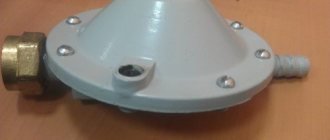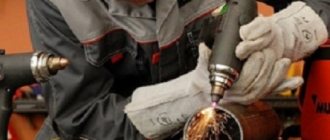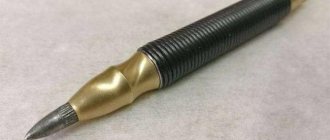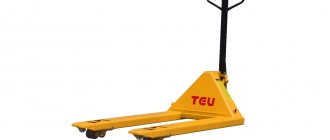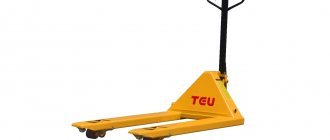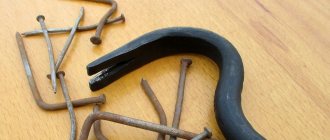Measuring the length of winding lines turns into a simple process if you have at hand a device designed for this purpose called a curvimeter.
It is difficult to do without it when working with drawings, plans and topographic maps, and its variety, the measuring wheel, allows you to measure distances directly on the ground or road, where it is impossible to perform the same procedure using other methods.
Considering that this measuring device is virtually universal when it comes to simple curves or complex winding lines, it is actively used by masters of figured forging and similar creativity.
Topographic curvimeter: main task and design
Curvimeter (curvus - from Latin) is a device with which distances are measured on topographic material (map, diagram, plan) with a minimum error. Construction institutes, as well as travelers, climbers, hunters and many other specialists and professionals who to this day prefer a paper map to an electronic medium know about the curvimeter, what it is and its photo.
The device measures curves, which is necessary when mapping routes. The principle of operation of a curvimeter is only one: holding the device along a winding line to measure its length. The resulting value is converted into distance units, taking into account the topographic scale.
Since the discovery of the mechanical curvimeter by the Germans, about 150 years ago, the mechanism and design have remained virtually the same:
- A case with a scale (dial) of a rectilinear or circular type. In different models, either the dial or the hand is movable.
- The wheel is small in size with serrations (teeth).
- Handle (holder).
Let's take a look at the mechanical curvimeter, what it is - the photo looks like this:
The scale is in centimeters or inches, the standard value is 100 cm in 1 cm increments, and the possible error is 0.25 cm per 50 cm of length. To reset the result obtained on the dial, a modern model of a mechanical device has a button to return to zero; otherwise, you need to spin the wheel in the opposite direction.
Mechanical device - the old horse does not spoil the furrows
Models of mechanical instruments are not much different from each other. Only the scale and dial may differ. It can be either round or straight, and the dial can be stationary, with a movable index, or with a movable hand. There are often models with both movable dials and fixed indexes. More often this is a small device, and the average weight of a standard mechanical device is about 50 grams. Well, we already know what the curvimeter measures. A typical tool of a model such as KU-A has dimensions of 50x20x100 mm, it was made by manufacturers in our country and was a mandatory tool for every officer.
The mechanical option has a number of advantages. These devices are simple not only in design, but also in use. There are no electronic circuits or other complex elements here. This makes it possible to use them in any weather, temperature and even climatic conditions. The tool does not depend on electricity, as there are no batteries. This allows you to use it not only indoors, but also outdoors, that is, in places where there is no access to home electrical networks. Most often, such models are made from high-strength materials, this makes them shock-resistant. At the same time, they are also moisture-resistant, which guarantees the safety of the instrument when it gets into water.
The listed characteristics show that mechanical options are perfect for use in the field . Like every tool, these models also have disadvantages. They are not designed to accurately determine tenths. Therefore, when measuring, the values are indicated approximately. Actually, if accuracy is not too important, then mechanics is a worthy option, besides, it is easy to make such a field curvimeter with your own hands, unless, of course, you have forgotten some geometric formulas.
Rules for using the curvimeter
There are three basic rules for using the device in practice to achieve the most accurate result:
- The entire length that needs to be measured is divided into separate sections with bookmarks between them.
- The use of topographic material with a large scale - 1:50,000, 1: 100,000. In this case, careful repetition of the bends of the line, the length of which is measured, is mandatory.
- The “measure seven times” rule. The obtained result must be checked, preferably more than once - this makes it possible to eliminate errors by checking the values of several measurements with each other.
Types of devices, their advantages
Beyond the specified criterion, the device can be mechanical, as mentioned above, or electronic.
A mechanical device is more convenient in field conditions, as it is accurate, compact and unpretentious. The differences between different manufacturers and years of production include:
- device form;
- scale type;
- units of measurement;
- availability of additional functions.
Advantages of a mechanical device:
- dust, water, temperature and shock resistance of the mechanism;
- weight approximately 50-100 g, size – no more than the palm of your hand;
- does not need recharging.
The electronic type is more suitable for working with cartography indoors at a table, as it is more “sensitive” to surface irregularities.
Video: How to make the device yourself
Advantages of the electronic analogue:
- compact size (similar to a keychain, ballpoint pen), light weight (up to 50 g);
- continuous operation of the device – up to 400 hours;
- has a compass, calculator and flashlight;
- ability to change units of measurement;
- performs ready-made calculations - the scale is set in the device;
- data saving function.
Separation of measuring devices by calculation method
According to the method of calculation, such measuring instruments can be divided into mechanical and electronic. The former are in a lower price category, however, their accuracy is not so high - there is a significant error. Let us consider each type in detail so that the reader understands their inherent advantages and disadvantages.
Mechanical measuring instruments involve measurement error
Mechanical distance measuring instruments
The good old classic is still popular today. However, in most cases it is used by experienced cartographers of the old school, who do not trust newfangled gadgets too much. If we talk about the advantages of mechanics, we can note the following:
- low cost in comparison with electronic analogues;
- compactness and light weight;
- autonomy - the device does not require power;
- impact resistance - in most cases the case is made of light metal or wood;
- moisture protection – this option will appeal to tourists, travelers, rescuers and sailors.
But with all the advantages, one cannot fail to mention the disadvantages of mechanical curvimeters, including:
- higher measurement error compared to an electronic device;
- there is no opportunity to receive hundredths of shares (if necessary);
- you need to make additional calculations, correlating the readings with the map scale.
Of course, you can’t close your eyes to the shortcomings, however, those who use mechanics are ready to put up with them, because such a device is simple and, most importantly, reliable. The circular scale is 100 cm. When the roller is turned completely, the pointer moves by 1 mm. After “traversing” the route on the map, the readings are multiplied by the scale, resulting in the distance from point to point.
Electronic curvimeters and their features
Modern followers of mechanical curvimeters, capable of immediately displaying the distance between points in any given units. Electronic devices were developed for the offices of design bureaus, however, over time they gained popularity among people not associated with cartography. Let's consider what advantages an electronic device has:
Electronic devices have higher measurement accuracy
- One full charge lasts for 300-400 hours. At the same time, the time is extended due to the shutdown function;
- It can withstand light impacts easily, thanks to the durable plastic casing (it won’t survive a fall from a height);
- wide range of operating temperatures;
- ability to independently make all necessary calculations;
- the presence of additional features (backlight, flashlight, compass) significantly expands the functionality;
- The measurement accuracy is much higher than that of mechanical analogues, the ability to measure up to 1 meter.
Among the negative qualities, we note that it is susceptible to moisture, which means that the device cannot be used in a rainstorm or storm.
Road curvimeter
Let's look at a road curvimeter and what it is (photo below) - a type of device adapted for measuring distances on terrain with almost any, even uneven, surface. Its help is most often resorted to when there is no opportunity and conditions to use a tape measure, light range finder or other measuring device.
The device is also called a road wheel, the dimensions of which are quite impressive and the weight is approximately 2 kg. Outwardly it looks like an educational toy for little ones, the principle of which is that the wheel moves forward with the help of a handle.
All road curvimeters differ from each other for:
- size and weight;
- wheel type: disc (solid) or with spokes;
- measurement range and step;
- fastening the meter: attached to the handle or attached to the wheel;
- measurement method: electronic or mechanical.
The device consists of the following parts:
- wheel;
- folding handle;
- counter;
- brake button;
- functional buttons and display – in electronic version.
Model comparison table
To make it easier for you to choose a curvimeter, we have placed all the models discussed in the article in one comparative table:
| Name | Measurement error (%) | Weight, kg.) | Cost, rub.) |
| 0,5 | 1,07 | 1.500–1.700 |
| 0,5 | 1,6 | 2.800–3.000 |
| 2 | 1,2 | 3.100–3.300 |
| 0,5 | 0,518 | 3.200–3.400 |
| 0,5 | 1,4 | 6.100–6.700 |
| ±5cm/100m | 1,37 | 6.500–7.000 |
| 0,1 | 1,3 | 12.000–13.000 |
| 0,5 | 2,5 | 16.000–17.000 |
| 0,5 | 1,4 | 3.800–4.000 |
| 0,5 | 3 | 4.800–5.000 |
| 1 | 2,8 | 5.500–6.000 |
| 0,1 | 1,2 | 11.000–12.000 |
| 0,5 | 2,5 | 14.000–15.000 |
Working principle and main functions of a road wheel
The principle of operation is no different from the “desktop” one - you need to roll the device along a section of the road to measure it, and then take the readings from the display. The curvimeter can move forward and backward. In functional terms, it is possible to retain, save and delete data. Comes with a carrying case for convenient storage and transportation.
When working with it, it is also worth considering:
- When calculating the length of the route, it is better to break the line into several parts with memorable landmarks and points between them. The device is large and inconvenient to use for too long; it is worth taking into account the human factor when measuring a route, which can negatively affect the result.
- The larger and more detailed the map, the more accurate and convenient the measurement process and the quality of the task will be.
- Again, like the 3rd rule of using a curvimeter for maps, you will have to measure seven times here too. Given the complexity of the task due to the size and weight of the device, the responsible approach to the work being done would be to repeat the measurements at least one more time.
- To control your own location on the route, it is convenient to use points such as a checkpoint, a bridge over a river, a dam, etc. This is necessary in the event that the electronics fail, and along with it, communication with the outside world and place is lost finding.
- Keeping records of measurements, where individual points and distances are marked, is convenient if it is necessary to coordinate the route and compare it with the measurements of other group members.
In conclusion, I would like to note that the curvimeter is a convenient, popular device in its specificity, which clearly demonstrates the well-known fact that everything ingenious is simple.
